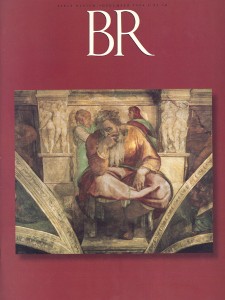“Do not learn the way of the nations,” implores Jeremiah (10:1). The prophet reserves his bitterest scorn for idol worship, declaring idols worthless and an illusion. But what were these idols, how did they look and what were they made of? In “Jeremiah’s Polemic Against Idols,” Philip J. King draws on archaeological evidence to provide some answers. His discussion of the god-images created by the Babylonians and Assyrians explains how these gods were fashioned and worshiped, giving a concrete context to Jeremiah’s poetic diatribe.

King, a leading authority on archaeology and the Hebrew Bible, is professor of biblical studies at Boston College. Among his recent books are Jeremiah: An Archaeological Companion (Westminister/John Knox, 1993) and Amos, Hosea, Micah—An Archaeological Companion (Westminister, 1988).
They have been called “Magna Carta of civilized society.” Yet the Ten Commandments, while always ten and containing essentially the same rules of conduct, are numbered differently in different religious traditions, explains Ronald Youngblood in “Counting the Ten Commandments.” Youngblood offers intriguing solutions to such problems as why the commandments are not always numbered in the same way and why there were two stone tablets for them, not just one.
Already a library member? Log in here.
Institution user? Log in with your IP address.

